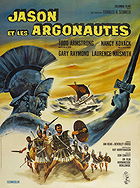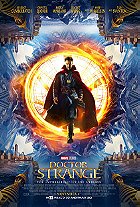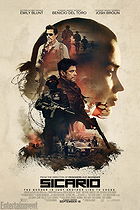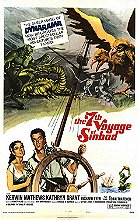Posted : 8 years, 7 months ago on 22 November 2016 05:15
(A review of
Ray Harryhausen regarded this as his all-time best film, and it was a moment of an artist correctly appraising their own work. This is not only the greatest film in his canon, but one of the greatest films of all-time. No, it’s not some deep, cerebral viewing experience, but this is what a piece of great entertainment looks like. This is what a transportive, highly imaginative action-fantasy-epic should feel like.
In a career filled with memorable and unique monstrous creations, Jason and the Argonauts is the definitive piece of an artistic master. The various stop-motion creations are doled out in a steady drip here, beginning with imposing Talos and ending with the one-two punch of the snapping hydra and the band of marauding skeletons. These creatures terrorize various characters and Greek cities that only exist in the fervid imagination of Harryhausen. Sure, Jason, Hercules, Medea, and the Greek gods appear in mythology, but not quite like this. They have been refracted through Harryhausen’s distinct cinematic prism, and it is a warm, artisanal point-of-view.
The obvious highlight of the still impressive effects work is how technically complicated all of it is. Talos, a gigantic metallic statue come to life, is something that Harryhausen had done before in the Cyclops attack during the earliest scenes of The Seventh Voyage of Sinbad. Aside from that one sequence all of the others are technical feats that prove he was operating at the height of his artistry. The harpies fly and thrash under a net, the Hydra is a seven-headed nightmare of snapping mouths and a slithering tail, and the bravura battle with the skeletons all fire the synapses and linger in the mind. The minute attention to detail is so ornate that if you look close enough you’ll notice the shields on the skeletons contain prior Harryhausen creations like Ymir and the cephalopod from It Came from Beneath the Sea.
While there is no question that Ray Harryhausen is true auteur of his films, certain directors knew how to whip the sinewy material between his effects money shots into pleasing foreplay. Don Chaffy is a prime example of this, as he keeps you interested even when there’s no mythological monstrosities on display. His directing is energetic and buoyant, creating a series of memorable images in the absence of Harryhausen’s effects. Look no further than the tension filled sequence where the Argo travels between the Clashing Rocks where still waters are merely a prelude to a terrifying fate. Or how about the view of Olympus as a sterile white palace where the gods play with our fates like chess pieces on large map and view their work through a reflecting pool. I’m sure that Harryhausen had a hand in these decisions, but Chaffey’s camera is what makes such absurdities into the stuff of dreams.
It is precisely this tangible quality of the effects, a series of matte shots, trick photography, stop-motion animation, that give Jason and the Argonauts the impressions and dream-like quality that makes it so memorable. Compare it to the recent CGI-behemoths like Jurassic World where the various dinosaurs look like close approximations of the real thing, and the wonderment in Jason and the Argonauts hits you harder. These are the ideas of what these creatures are, to repurpose the argument that Roger Ebert made in favor and defense of King Kong’s rudimentary imagery. This tactile quality imprints itself more so than all of the slick CGI can. If I asked you to describe to me the skeleton attack or Talos’ stiff movements in detail, you probably could. If I asked you to describe to me Medusa in the Clash of the Titans remake, could you?
I have spent a great deal of time defending, describing, and engaging with the effects work and outlandish imagery of the film and very little how it uses Greek mythology, the acting, or the score. This is both a correct decision given how effective that specific quality is, and a wrong one at the expense of everything else. So let’s correct these oversights. Todd Armstrong as Jason is a bit bland, but he’s appropriately handsome and stolid. While Nancy Kovack is delightfully mysterious and vampy as Medea (in heavily truncated form), Nigel Green as a hearty and experienced Hercules, while Honor Blackman and Niall MacGinnis bring a certain overwrought-yet-classy Britishness to Hera and Zeus managing to sell the drollery and finicky nature of the gods.
Never go to Hollywood for a straight interpretation of Greek mythology, but Jason and the Argonauts makes a few interesting changes to the myth that work well for the medium. There’s no Hydra in the original, the honor of battling that demonic creature goes to Hercules while he completes his twelve labors. The original features a dragon that Medea uses magic to lull to sleep, and that’s just not cinematic. The decision to change it from a dragon to the Hydra and avoid a comparison to The Seventh Voyage of Sinbad was a very smart one. The Spartoi, the monsters that spring up from the teeth of the dragon/Hydra, were tricked into battling each other instead of Jason and the Argonauts. That’s just not terribly cinematic or thrilling, and making it a thrilling climactic battle is just good movie-making. And any lover of Greek mythology will notice that the film ends mid-way through the myth, completely removing the eventual revenge of Medea and betrayal by Jason, leaving us with a happy-ish ending. This works since the final words are given to Zeus and Hera who decide that they’ve had enough of playing with the lives and fates of mortals for now and will resume their games with Jason eventually.
Then there's Bernard Hermann's score with its surges and underlining bombast of the action scenes and light romance. It ranks right up there, possibly even above his wonderful work in their prior films, most obviously Mysterious Island and Sinbad. All of these elements combine to make Jason and the Argonauts still feel alive and vital despite the fifty-odd years since its release. No film is a purer distillation of the magic of Ray Harryhausen, merging the penchant for absurdities and creativity that informs his best work. This film is the great light from which his legacy and legend grows, from which the special-effects industry grew by leaps and bounds.
 Login
Login
 Home
Home 95 Lists
95 Lists 1531 Reviews
1531 Reviews Collections
Collections
 0 comments,
0 comments, 







